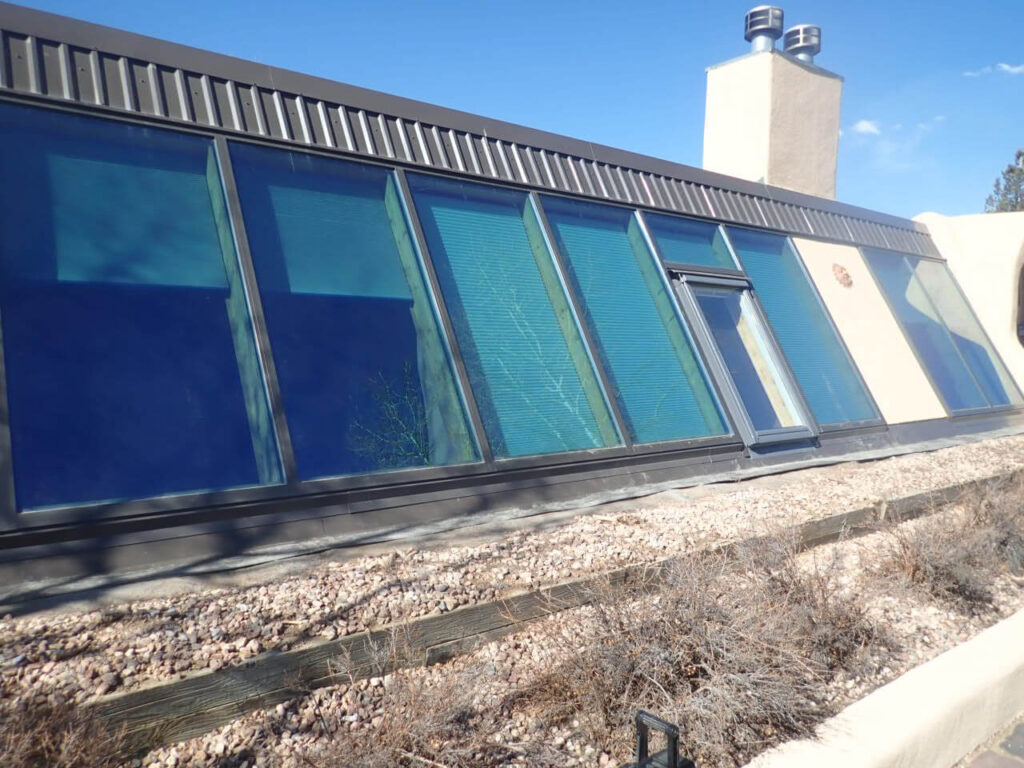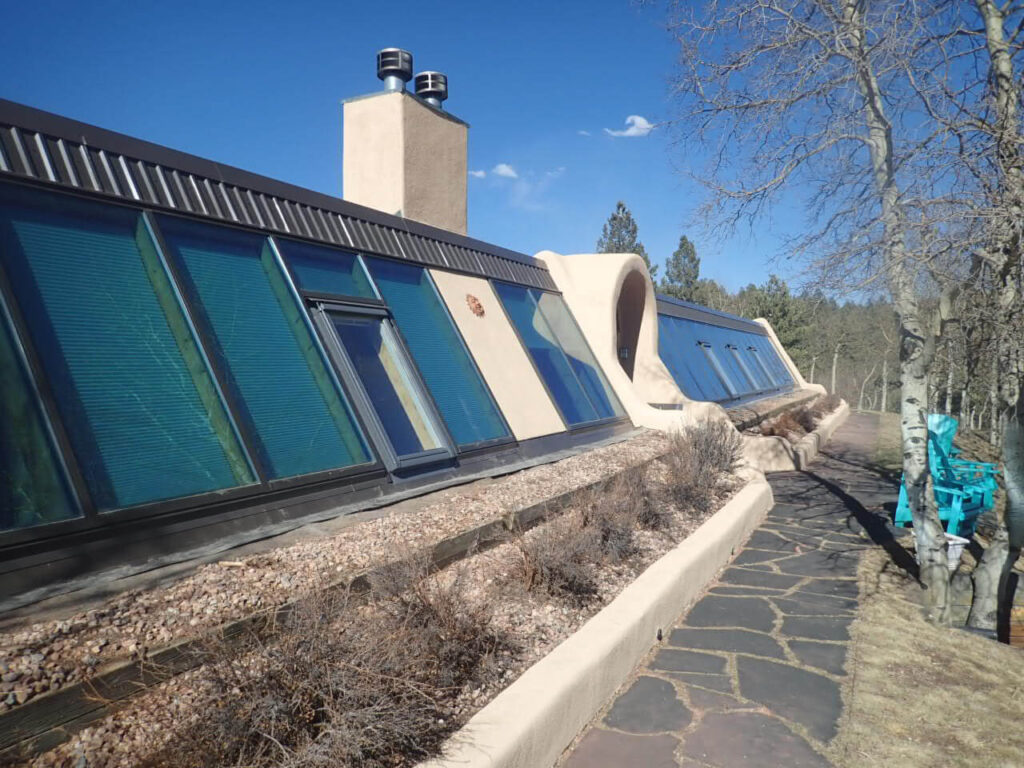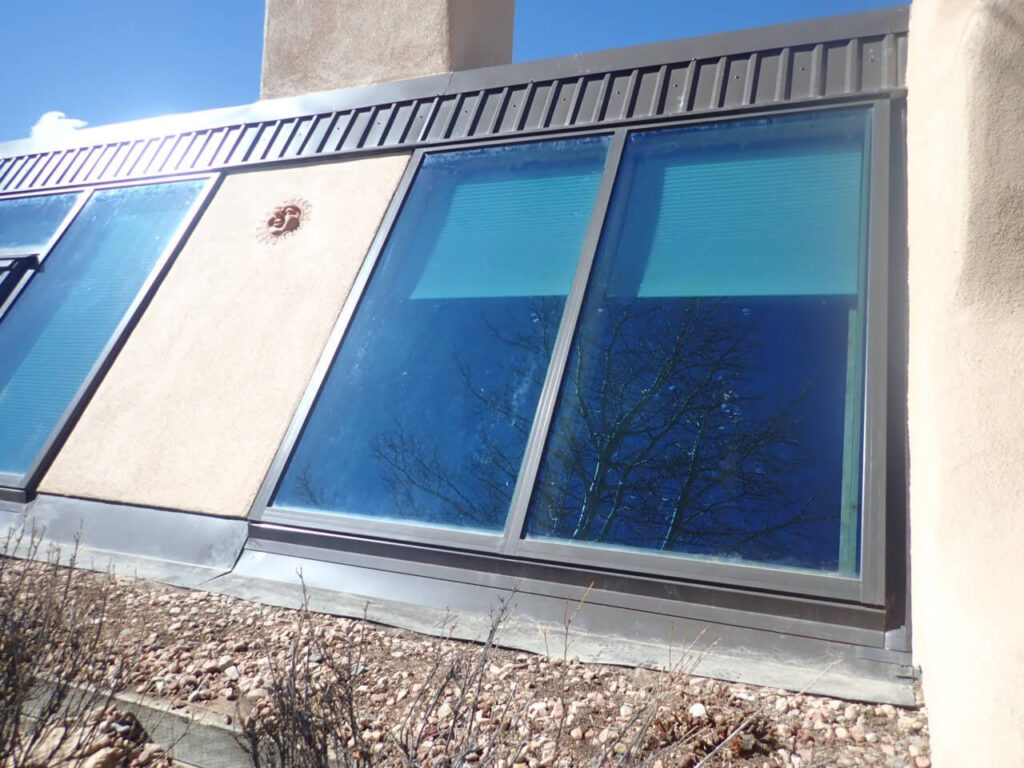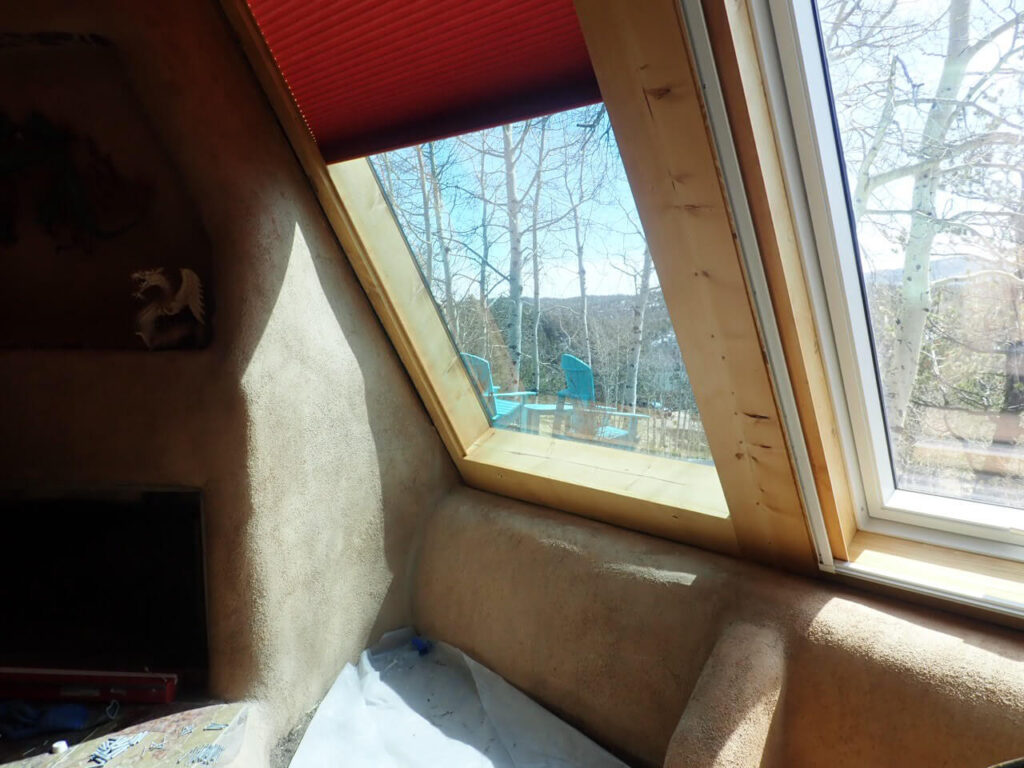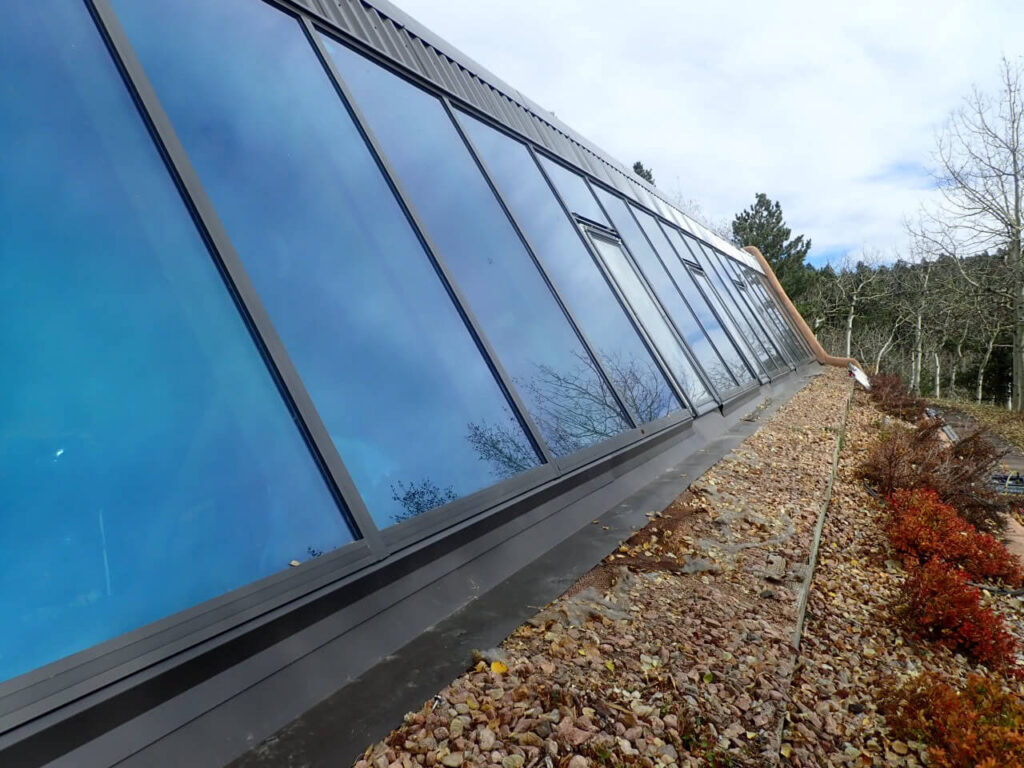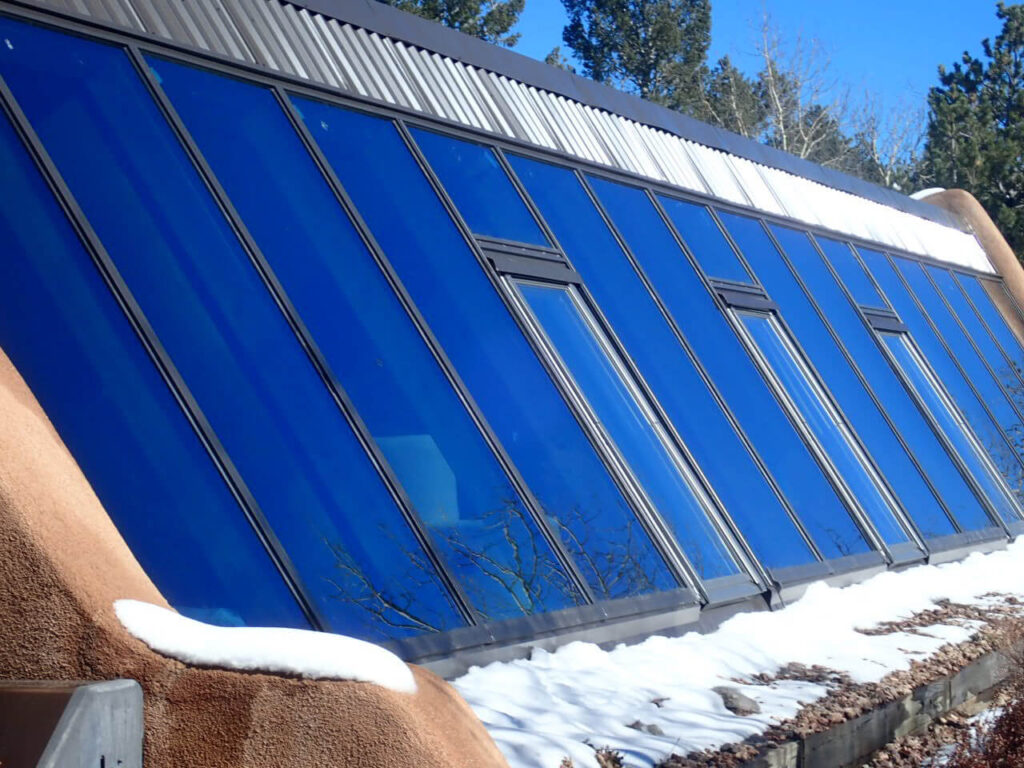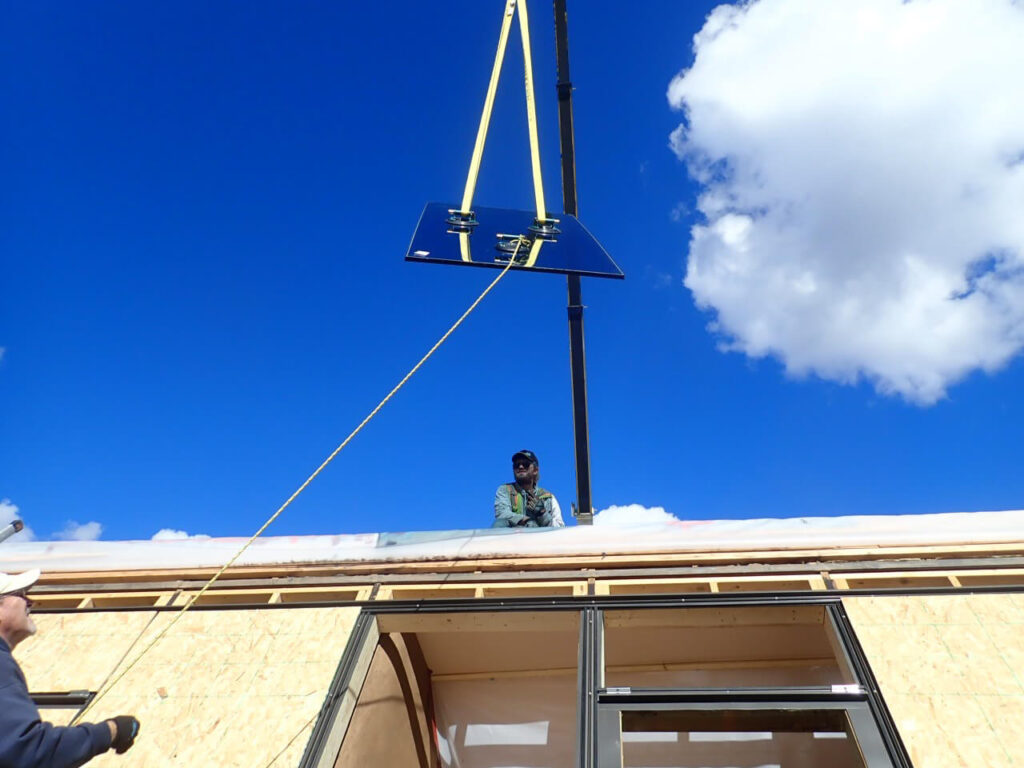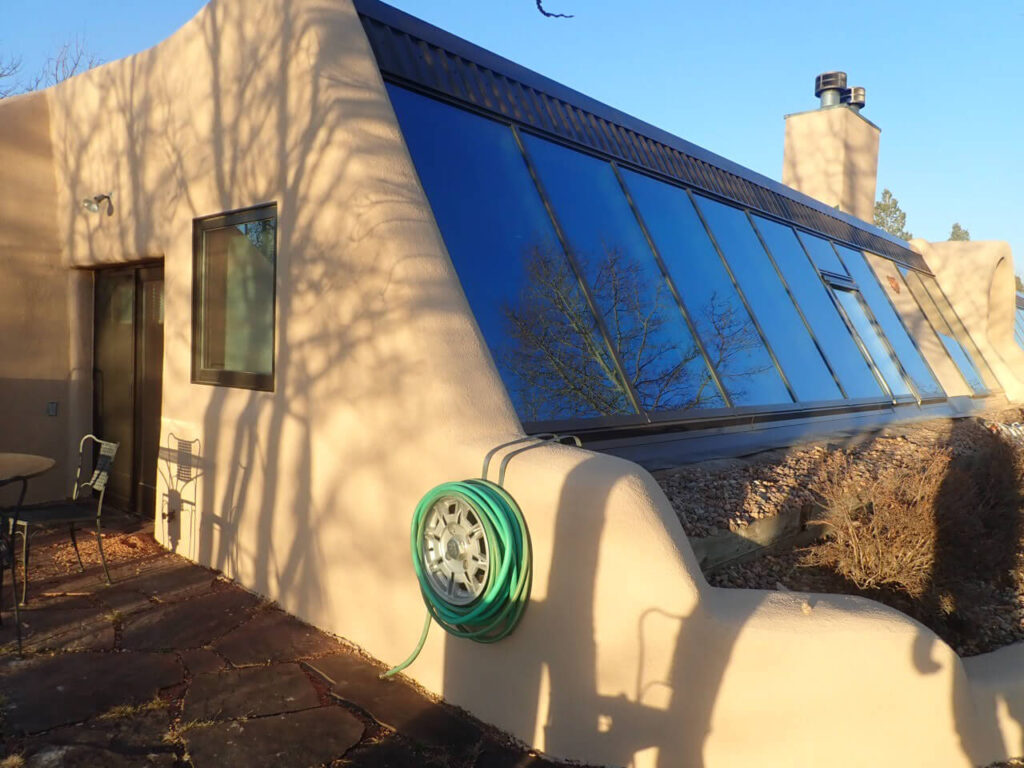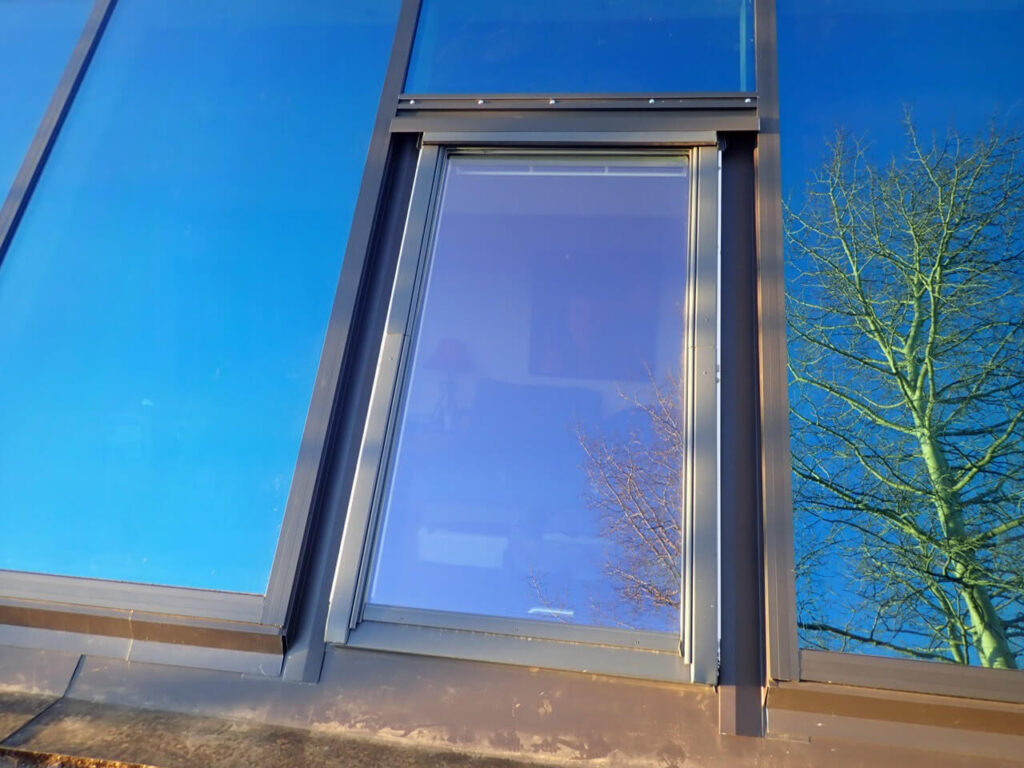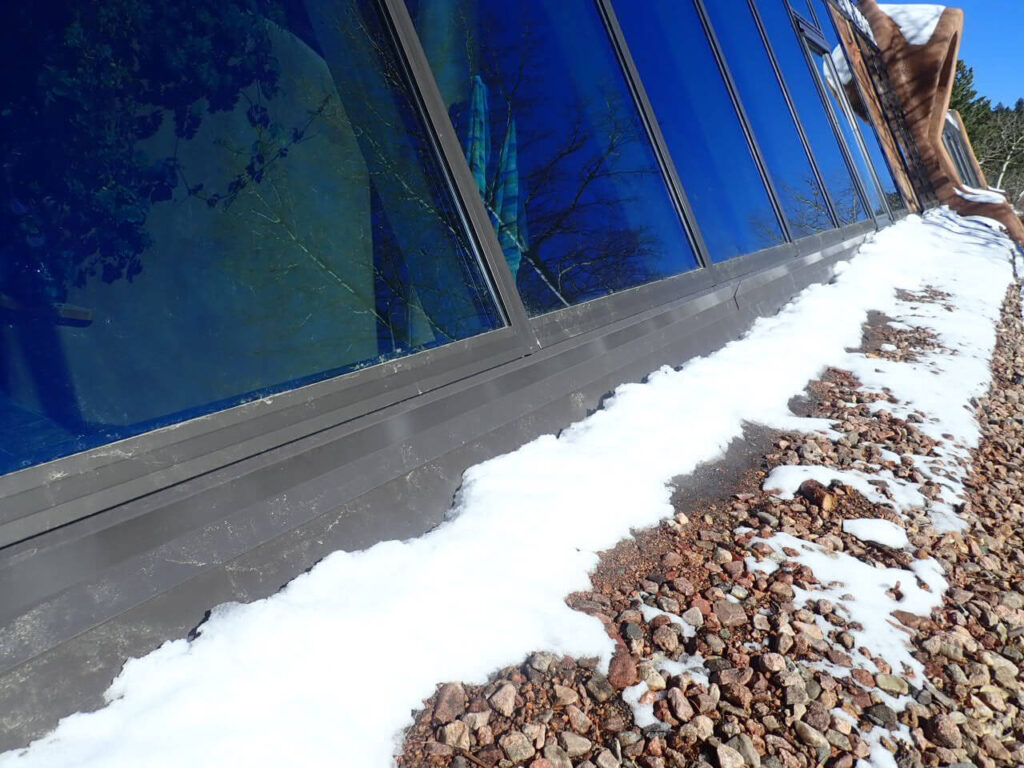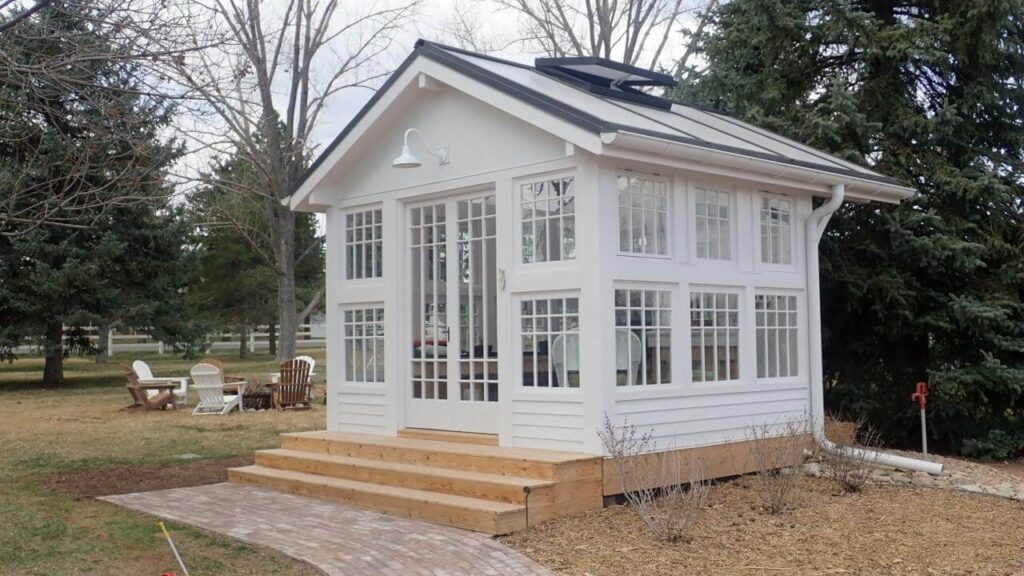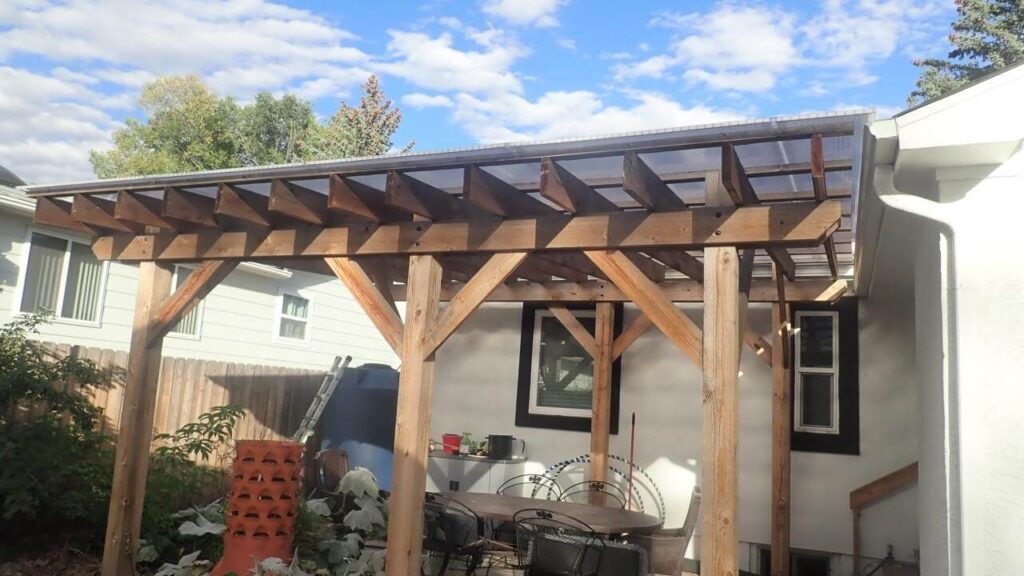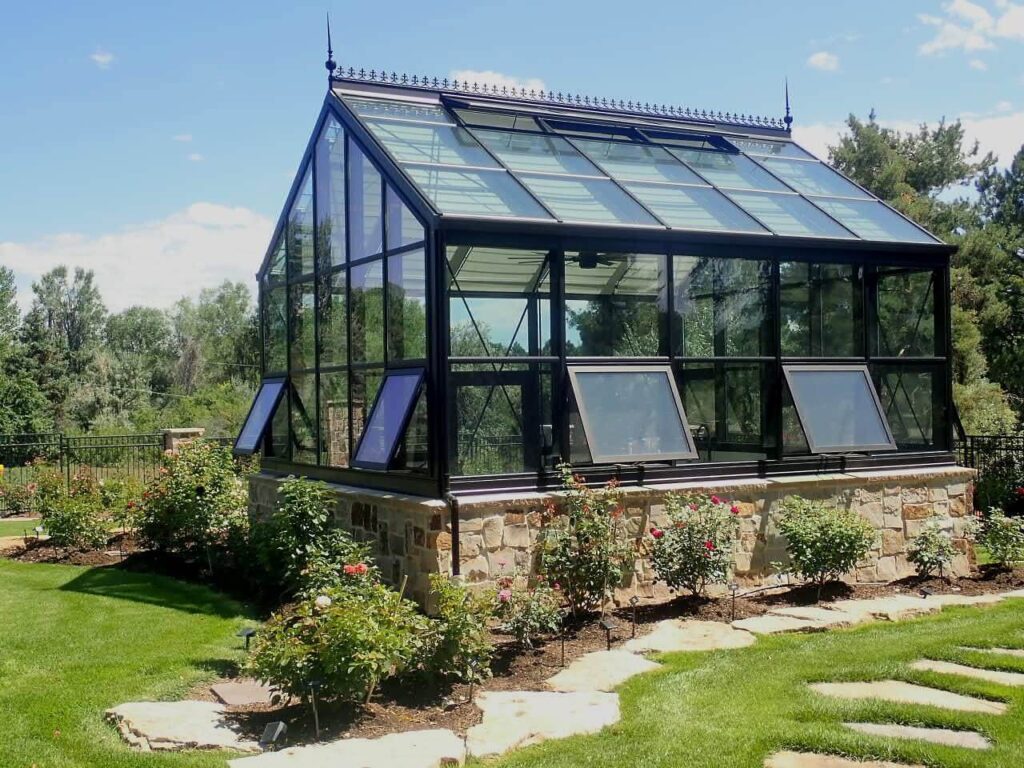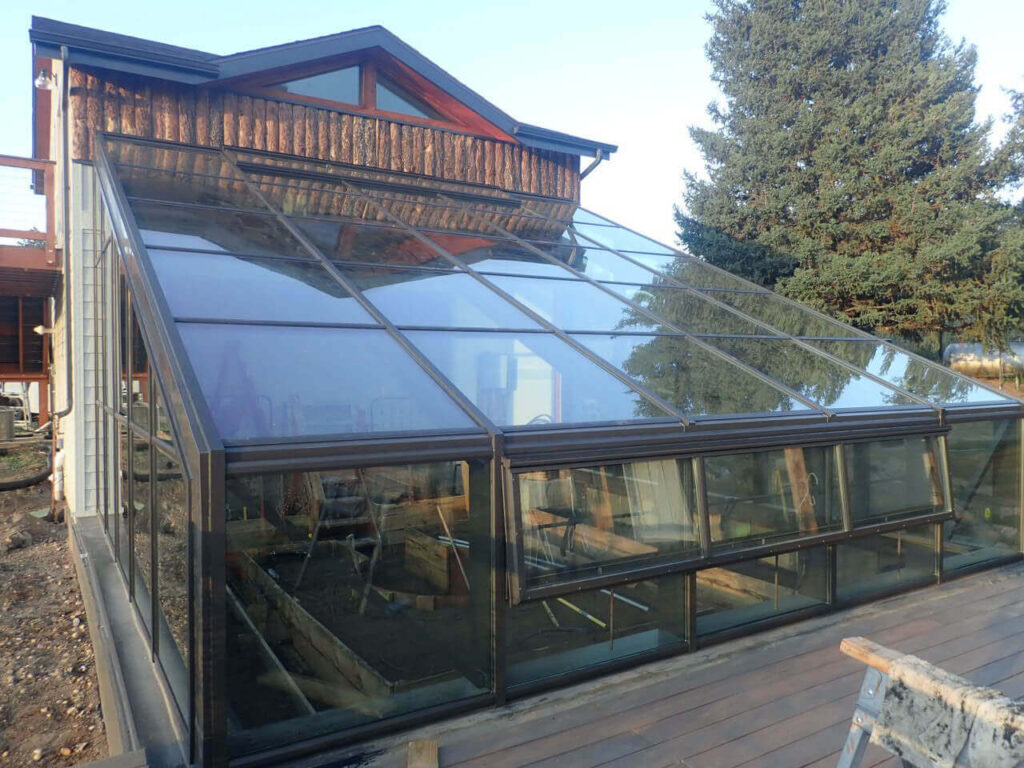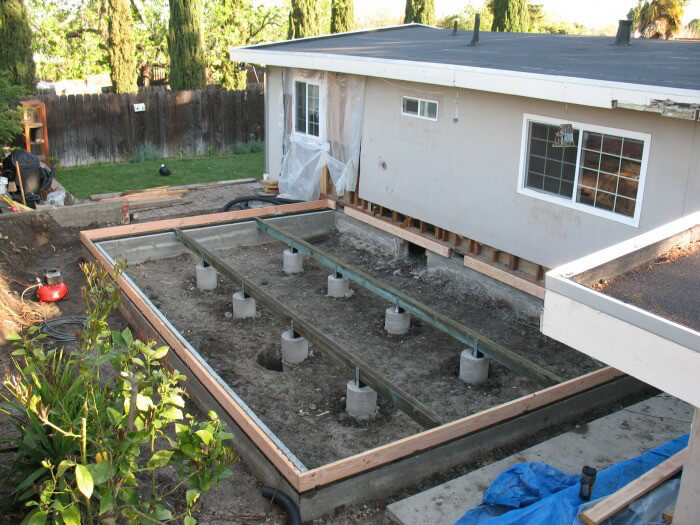Earthship Glazed Wall: The Key to Passive Solar Gain and Efficient Heating
In recent years, the importance of sustainability and Eco-friendliness has been on the rise. With growing concerns about global warming and other environmental issues, individuals are actively seeking ways to reduce their carbon footprint.
Earthship-glazed walls, an innovative solution gaining traction in the realm of green architecture. These walls offer a unique combination of energy efficiency, sustainability, and aesthetic appeal. Designed to capture and store heat from the sun, they provide passive solar gain which can keep your home warm and cozy during the colder months. If you’re considering building a new home or renovating an existing one, this is a must-read for anyone interested in sustainable and energy-efficient design.
But what exactly are earth-ship glazed walls?
These walls utilize cutting-edge technology to harness the sun’s energy for heating your home. Their high-performance glazing is fitted to a carefully designed structure that efficiently captures and stores heat, providing passive solar gain that effectively keeps your home warm. This not only reduces your reliance on traditional heating systems but also lowers your carbon footprint, making for a more sustainable living environment.
Greenhouse passive solar design is an innovative and eco-friendly way to transform any space into a warm and inviting oasis. By harnessing the power of the sun, you can create a space that is not only energy-efficient but also aesthetically pleasing. The concept behind greenhouse passive solar design is simple: use the sun’s natural heat and light to regulate the temperature and lighting in your space. This is achieved through the strategic placement of windows, walls, and other materials that absorb and retain the sun’s energy. This results in a space that stays warm in the winter and cool in the summer, without the need for excessive heating or air conditioning. Additionally, the use of natural light can reduce the need for artificial lighting, saving energy and money. With the increasing focus on sustainable living, greenhouse passive solar design is becoming a popular choice for homeowners and businesses alike. By incorporating this design into your space, you can not only reduce your carbon footprint but also create a comfortable and eco-friendly environment.
The benefits of earthship glazed walls extend beyond their energy efficiency. They also offer aesthetic appeal, thanks to their unique and eye-catching design. These walls can be adorned with a variety of materials, adding style to both the interior and exterior of your home. With a range of design options available, earthship glazed walls are the perfect blend of form and function.
In conclusion, the merits of earthship glazed walls cannot be overstated. Not only do they contribute to sustainable living and reduce your carbon footprint, but they also add to the overall aesthetic of your home. Whether you’re considering a new construction or renovating an existing one, incorporating earth ship-glazed walls is a wise and forward-thinking choice. Don’t miss out on the opportunity to enhance your lifestyle with this innovative and ecofriendly technology. In recent times, the importance of sustainable and eco-friendly practices has greatly increased. With the growing concern over global warming and other environmental issues, individuals are actively seeking ways to reduce their carbon footprint.
Earthship-glazed walls have emerged as a pioneering solution in the realm of green architecture. They offer a unique blend of energy efficiency, sustainability, and aesthetic appeal. These walls are designed to harness and retain solar energy, enabling passive solar gain that can keep your home warm and snug during colder seasons.
In this article, we will delve into the advantages of Earthship glazed walls and highlight their role in efficient heating and passive solar gain. Whether you are constructing a new home or renovating an existing one, this is a must-read for those interested in environmentally sustainable and energy-efficient design.
What exactly does an Earthship glazed wall entail?
The fundamental hallmark of Earthship Biotecture, an Earthship glazed wall, has been spearheaded by architect Michael Reynolds in pursuit of sustainable housing. This remarkable characteristic is achieved by layering glass bottles and cans into a concrete and plaster structure, resulting in a striking mosaic bursting with vibrant hues. The bottles and cans act as thermal masses, absorbing warmth during the day and releasing it at night, effectively regulating the temperature inside the Earthship. Strategically positioned on the southern side of the building, facing the equator, the glazed wall utilizes the sun’s rays to the fullest, optimizing solar gain and natural illumination. Beyond its functional purpose, this feature also serves as a stunning design element, allowing for the gentle filtration of natural light and creating a mesmerizing visual impact both indoors and outdoors. More than just a feature, the Earthship glazed wall lies at the heart of passive solar design, utilizing the sun’s energy to efficiently heat and cool the structure, making it both environmentally friendly and exceptionally energy-efficient. This distinctive and groundbreaking element sets Earthships apart from conventional homes, demonstrating the potential of sustainable architecture to create aesthetically pleasing, functional, and Eco-friendly living spaces.
Discovering the Enigmas of Earthship Homes and Sustainable Building Design
 The design of Earthship homes rests on several sustainable principles, such as the utilization of recycled materials, passive solar heating, and natural cooling. This innovative approach involves using recycled tires, cans, and bottles filled with earth to create a thermal mass that helps regulate the temperature inside the home. Over time, Earthship homes have undergone a continuous evolution towards increased energy efficiency and sustainability. One of its most notable features is the utilization of passive solar heating, which is achieved through the use of glazed walls. These walls allow sunlight to enter the home, heating up the thermal mass. The Earthship glazed wall serves a fundamental role in passive solar heating. It is typically composed of multiple layers of glazing, with tempered glass often being the outermost layer. This helps to trap heat inside the home and provides insulation against colder temperatures. Today, Earthship homes can be found throughout the world, and the principles of sustainable architecture that they embody are steadily gaining popularity. From its modest beginnings in the 1970s, Earthship homes have become an emblem of sustainable living, serving as a model for future generations of architects and builders.
The design of Earthship homes rests on several sustainable principles, such as the utilization of recycled materials, passive solar heating, and natural cooling. This innovative approach involves using recycled tires, cans, and bottles filled with earth to create a thermal mass that helps regulate the temperature inside the home. Over time, Earthship homes have undergone a continuous evolution towards increased energy efficiency and sustainability. One of its most notable features is the utilization of passive solar heating, which is achieved through the use of glazed walls. These walls allow sunlight to enter the home, heating up the thermal mass. The Earthship glazed wall serves a fundamental role in passive solar heating. It is typically composed of multiple layers of glazing, with tempered glass often being the outermost layer. This helps to trap heat inside the home and provides insulation against colder temperatures. Today, Earthship homes can be found throughout the world, and the principles of sustainable architecture that they embody are steadily gaining popularity. From its modest beginnings in the 1970s, Earthship homes have become an emblem of sustainable living, serving as a model for future generations of architects and builders.
How Earthship homes and greenhouses utilize passive solar gain for efficient heating
The use of passive solar gain is one of the defining characteristics of Earthship homes in the realm of efficient heating. This innovative method harnesses the power of the sun without reliance on mechanical or electrical systems. A prominent element of this design is the glazed wall, strategically positioned to absorb and disperse the sun’s energy throughout the home. The glazed wall, situated on the southern side of the home, boasts large, insulated windows. These windows serve as portals for the sun’s energy to enter and be stored in the thermal mass, such as the concrete floors and walls. Gradually, this energy is radiated throughout the home, providing natural and efficient heating. To ensure optimal performance, the amount of glazing considered in the design of an Earthship home is meticulously calculated, taking into account the specific location and climate. In colder regions, the glazed wall is larger to allow for more sunlight, while in warmer areas, a smaller glazed wall serves to prevent overheating. Beyond its practicality, the glazed wall also offers stunning panoramas of the surrounding landscape. It seamlessly integrates the interior and exterior, creating an inviting flow between the two worlds. In summary, the glazed wall stands as a hallmark of Earthship homes, providing both functional efficiency and aesthetic appeal. This feature exemplifies the intertwining of innovative sustainability and captivating design.
The benefits of passive solar gain in a home
Passive solar gain is the ability to use the sun’s energy to heat a home without the use of any mechanical systems. This type of heating has been used for centuries, but with the advent of modern architecture and construction practices, it has become even more efficient.
One of the key benefits of passive solar gain is its cost-effectiveness. Since there are no mechanical systems involved, the cost of installation and maintenance is significantly lower than that of traditional heating systems. This makes it an ideal choice for those who want to save money on their heating bills while still enjoying a warm and comfortable home. Passive solar gain is also incredibly environmentally friendly. By harnessing the power of the sun, you are reducing your carbon footprint and helping to protect the planet. This is particularly important in today’s world, where the effects of climate change are becoming more and more apparent.
Another benefit of passive solar gain is its ability to create a more comfortable living environment. Traditional heating systems can often result in hot or cold spots, and the air can become dry and stuffy. With passive solar gain, the heat is distributed evenly throughout the home, creating a more comfortable and pleasant living environment.
Finally, passive solar gain can also increase the value of your home. As more and more people become interested in sustainable living and green technology, passive solar gain is becoming an increasingly desirable feature for homebuyers. This means that investing in passive solar gain can not only save you money and protect the environment but can also be a smart financial decision in the long run.
How the Earthship glazed wall works to capture and store solar energy
The Earthship glazed wall is a fundamental component of the Earthship design. It is designed to capture and store solar energy, which is then used to provide passive solar gain and efficient heating to the living space. The glazed wall consists of double-glazed windows that are strategically positioned to face the sun’s path and allow maximum sunlight into the building.
The concept behind the Earthship glazed wall is simple – sunlight enters the building through the glazed wall, and the energy is absorbed by materials inside the dwelling. This energy is then stored and released slowly over time, providing a consistent source of heat. The materials used inside the Earthship are typically dense and have a high thermal mass, such as adobe or rammed earth, which is capable of absorbing and storing heat for long periods.
The glazed wall also has a venting system that regulates temperature in the building’s interior. When the space becomes too hot, the venting system can be opened, allowing hot air to escape and cool air to enter. Conversely, when the space becomes too cold, the venting system can be closed, trapping the warm air inside.
In summary, the Earthship glazed wall is a critical component of the Earthship design, providing passive solar gain and efficient heating to the living space. Its ability to capture and store solar energy is a key factor in making the Earthship design one of the most sustainable and energy-efficient housing solutions available today.
The materials used in an Earthship glazed wall….
The materials used in an Earthship glazed wall play a crucial role in the overall performance of the wall. The wall is typically made up of multiple layers, each with a specific function.
The outermost layer is the glazing itself, which is typically made of double-pane glass. This glass is specially designed to allow sunlight to pass through while minimizing heat loss.
Behind the glass, there is often a layer of air space. This space acts as an insulator, trapping the heat that enters the wall and preventing it from escaping back out. This is important because it allows the wall to absorb and store heat during the day, releasing it slowly at night when temperatures drop. The subsequent layer consists typically of a thermal mass material, such as adobe or concrete. This material is utilized to absorb and retain the heat that penetrates the wall. The thermal mass effectively regulates the temperature inside the Earthship by gradually releasing stored heat over time. Lastly, an additional layer of insulation is often added behind the thermal mass. This insulation serves to prevent heat from escaping through the back of the wall and into the surrounding soil. In summary, the materials employed in an Earthship’s glazed wall work in unison to construct an exceptionally proficient system for capturing and storing solar energy. By incorporating natural materials and passive solar design principles,
Earthships offer comfortable and sustainable living spaces with minimal energy usage.
Crafting the subsequent layer of an Earthship’s glazed wall necessitates careful consideration. Frequently, this layer is composed of a thermal mass material, such as adobe or concrete. The primary purpose of this material is to absorb and contain the heat that enters the wall, effectively regulating the temperature inside the Earthship. The thermal mass gradually releases the stored heat over time, ensuring a comfortable living environment. Behind the thermal mass, an additional layer of insulation is typically present. This insulation plays a pivotal role in preventing heat from escaping through the back of the wall and into the surrounding soil. In essence, the materials utilized in an Earthship’s glazed wall work in harmony to construct an immensely efficient system for capturing and storing solar energy. By utilizing natural materials and adhering to passive solar design principles, Earthships offer sustainable and comfortable living spaces while minimizing energy consumption. The significance of designing for maximum passive solar gain cannot be overstated.
This consideration is critical to achieving optimal results in an Earthship’s glazed wall. Maximize passive solar gain to achieve the best outcomes.
Passive solar gain is a key element of an Earthship glazed wall design. The design considerations necessary to maximize this passive solar gain involve several factors that work together to ensure that the Earthship is heated as efficiently as possible.
The orientation of the Earthship is one of the most important factors to consider when maximizing passive solar gain. The Earthship should be oriented in a way that it captures as much sunlight as possible during the day. South-facing glazing is the most effective way to achieve this because it allows for the maximum amount of sunlight to enter the building.
The Earthship’s thermal mass is another key factor in maximizing passive solar gain. The thermal mass is the material used to store the sun’s energy. It helps to regulate the temperature inside the Earthship by storing heat during the day and releasing it at night. The thermal mass should be located in areas that receive direct sunlight, such as behind south-facing glazing, to ensure it absorbs as much heat as possible. Glass panel placement is also important when designing an Earthship glazed wall. Glass panels should be strategically placed to allow for passive solar gain, but they should also be located in areas that are easy to shade in the summer to prevent overheating. The use of shading devices such as overhangs, awnings, or trees can help to regulate the amount of sunlight that enters the building.
Finally, it’s important to consider the insulation of the Earthship glazed wall. Insulation helps to prevent heat loss during the night and in colder weather. The insulation should be located on the exterior of the thermal mass to ensure that it is as effective as possible. By taking these design considerations into account, an Earthship glazed wall can maximize passive solar gain and provide efficient heating for the building.
How to incorporate an Earthship glazed wall or greenhouse into your sustainable home design
Incorporating an Earthship glazed wall into your sustainable home design can be an excellent way to increase passive solar gain and improve heating efficiency.
Here are some tips to help you get started:
- Choose the right location: The glazed wall should face south to maximize solar gain. It should be located in a spot where it will receive maximum sunlight throughout the day.
- Determine the right size: The size of the glazed wall will depend on the size of your home and the amount of solar gain you want to achieve. A general rule of thumb is that the glazed area should be no more than 25% of the total floor area.
- Select the right glazing material: The glazing material should have good insulating properties, be durable, and let in as much light as possible. Double or triple-pane glass with low-e coatings are great options.
- Consider shading: Depending on your location, you may need to incorporate some form of shading to prevent overheating in the summer. This could be achieved through overhangs, external shading devices, or internal curtains or blinds.
- Ventilation plan: Proper ventilation is important to prevent overheating and maintain indoor air quality. Consider incorporating operable windows or vents that can be opened to allow for natural ventilation. The rule of thumb for successful ventilation and maintaining a steady temperature within a greenhouse/sunroom is to have 20% of the total footprint operable and ventilating …. more on this later…
Incorporating an Earthship glazed wall into your sustainable home design can greatly reduce your energy consumption and create a comfortable, sustainable living space. With careful planning and design, you can enjoy the benefits of passive solar gain and efficient heating for many years.
How to incorporate an Earthship glazed wall or greenhouse into your sustainable home design
- When building a home, numerous sustainable design features can be incorporated to reduce the impact on the environment while also increasing energy efficiency.
- Here are a few other sustainable design features to consider when building your home:
- Green Roofs: green roofs are a great way to insulate your home and reduce cooling costs in the summer. They also help to absorb rainwater and reduce stormwater runoff.
- Solar Panels: Solar panels are a great way to generate electricity and reduce your reliance on fossil fuels. They are becoming more affordable and efficient with each passing year.
- Rainwater Harvesting: Collecting rainwater is a great way to reduce your water bill and conserve water. This water can be used for irrigation, flushing toilets, and even drinking water if properly filtered.
- Passive Solar Design: Passive solar design utilizes the sun’s energy to heat and cool your home naturally. This can be achieved through the use of large windows, thermal mass, and proper orientation of the home.
- Energy-Efficient Appliances: When selecting appliances for your home, choose ones that are Energy Star certified. These appliances are designed to be energy efficient and can help to reduce your energy bill.
By incorporating these sustainable design features into your home, you can reduce your impact on the environment while also creating a more comfortable and efficient living space.
Conclusion: The future of sustainable architecture and the importance of passive solar gain
In conclusion, the future of sustainable architecture lies in designs that prioritize passive solar gain. With the increasing focus on eco-friendliness and energy efficiency, it’s more important than ever to build homes and structures that are not only functional but also sustainable. The Earthship glazed wall is a great example of how passive solar gain can be utilized to create a comfortable and energy-efficient living space.
Passive solar gain is a natural and easy way to harness the energy of the sun and utilize it to heat and cool your home. It’s a simple concept that has been used for thousands of years, and with modern technology and building practices, it’s easier than ever to incorporate into your design.
By using passive solar gain, you can reduce your reliance on traditional heating and cooling methods, and in turn, reduce your carbon footprint. The Earthship glazed wall is a prime example of how this can be done in a unique and visually appealing way.
Architects and builders need to prioritize these types of designs as we move towards a more sustainable future. By incorporating passive solar gain into our buildings, we can reduce our impact on the environment while also creating beautiful and functional spaces for people to live and work.
In summary, the Earthship glazed wall is a key component of sustainable architecture, and passive solar gain is an important concept to consider when designing energy-efficient buildings. Together, we can create a more sustainable future for ourselves and the planet.
We hope you enjoyed learning about Earthship glazed walls and how they can help you achieve passive solar gain and efficient heating. By understanding the principles behind these walls, you can create a more sustainable and efficient home that takes advantage of the natural resources available to you. Whether you are building a new home or retrofitting an existing one, incorporating Earthship glazed walls and or greenhouses can help you reduce your carbon footprint and save money on your energy bills.
Thank you for joining us in this quest to make our homes eco-friendly!


